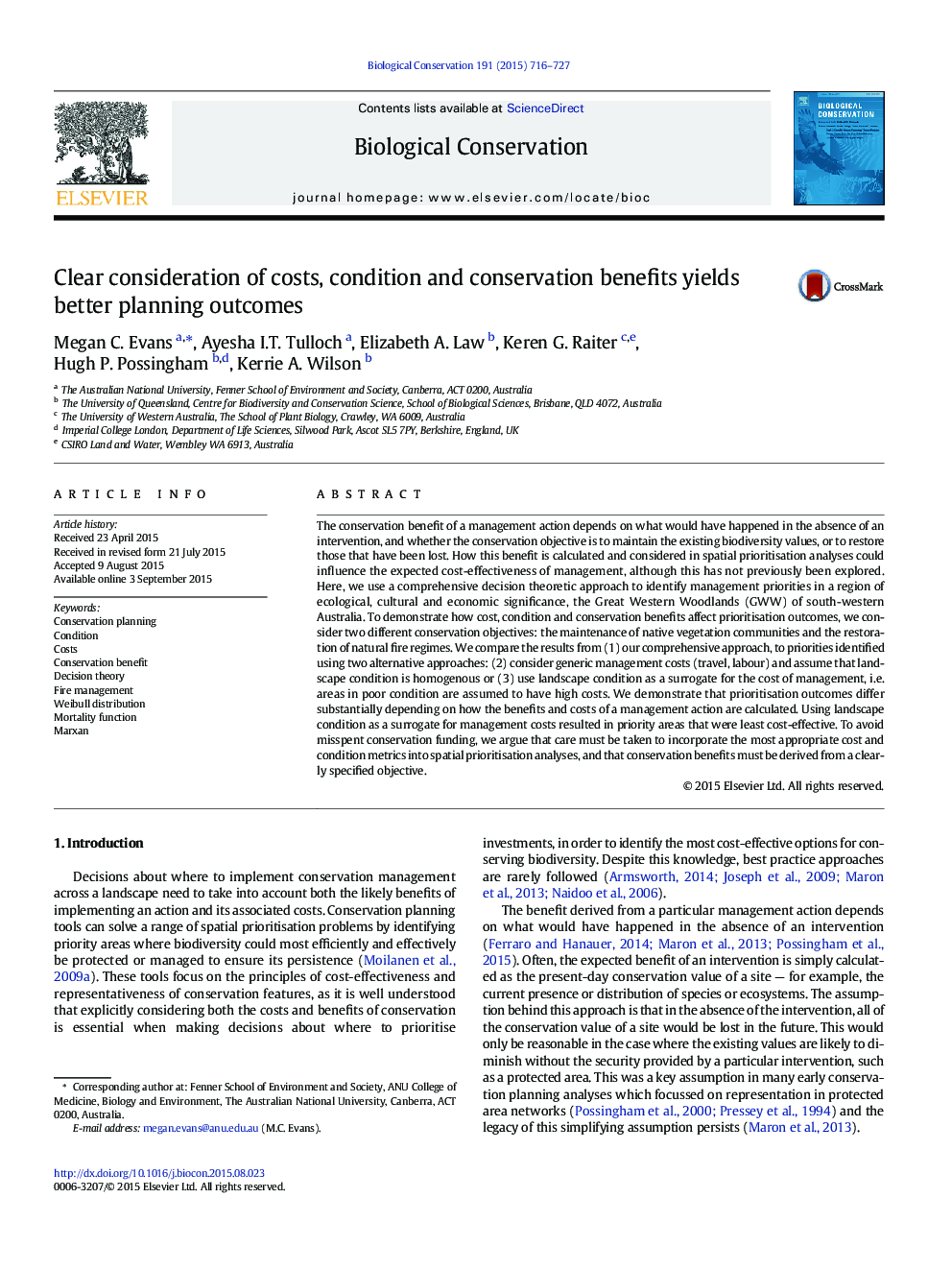| Article ID | Journal | Published Year | Pages | File Type |
|---|---|---|---|---|
| 6299079 | Biological Conservation | 2015 | 12 Pages |
Abstract
The conservation benefit of a management action depends on what would have happened in the absence of an intervention, and whether the conservation objective is to maintain the existing biodiversity values, or to restore those that have been lost. How this benefit is calculated and considered in spatial prioritisation analyses could influence the expected cost-effectiveness of management, although this has not previously been explored. Here, we use a comprehensive decision theoretic approach to identify management priorities in a region of ecological, cultural and economic significance, the Great Western Woodlands (GWW) of south-western Australia. To demonstrate how cost, condition and conservation benefits affect prioritisation outcomes, we consider two different conservation objectives: the maintenance of native vegetation communities and the restoration of natural fire regimes. We compare the results from (1) our comprehensive approach, to priorities identified using two alternative approaches: (2) consider generic management costs (travel, labour) and assume that landscape condition is homogenous or (3) use landscape condition as a surrogate for the cost of management, i.e. areas in poor condition are assumed to have high costs. We demonstrate that prioritisation outcomes differ substantially depending on how the benefits and costs of a management action are calculated. Using landscape condition as a surrogate for management costs resulted in priority areas that were least cost-effective. To avoid misspent conservation funding, we argue that care must be taken to incorporate the most appropriate cost and condition metrics into spatial prioritisation analyses, and that conservation benefits must be derived from a clearly specified objective.
Keywords
Related Topics
Life Sciences
Agricultural and Biological Sciences
Ecology, Evolution, Behavior and Systematics
Authors
Megan C. Evans, Ayesha I.T. Tulloch, Elizabeth A. Law, Keren G. Raiter, Hugh P. Possingham, Kerrie A. Wilson,
